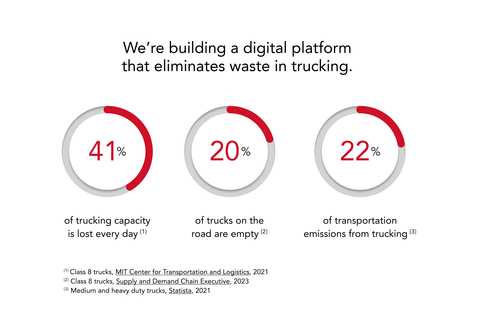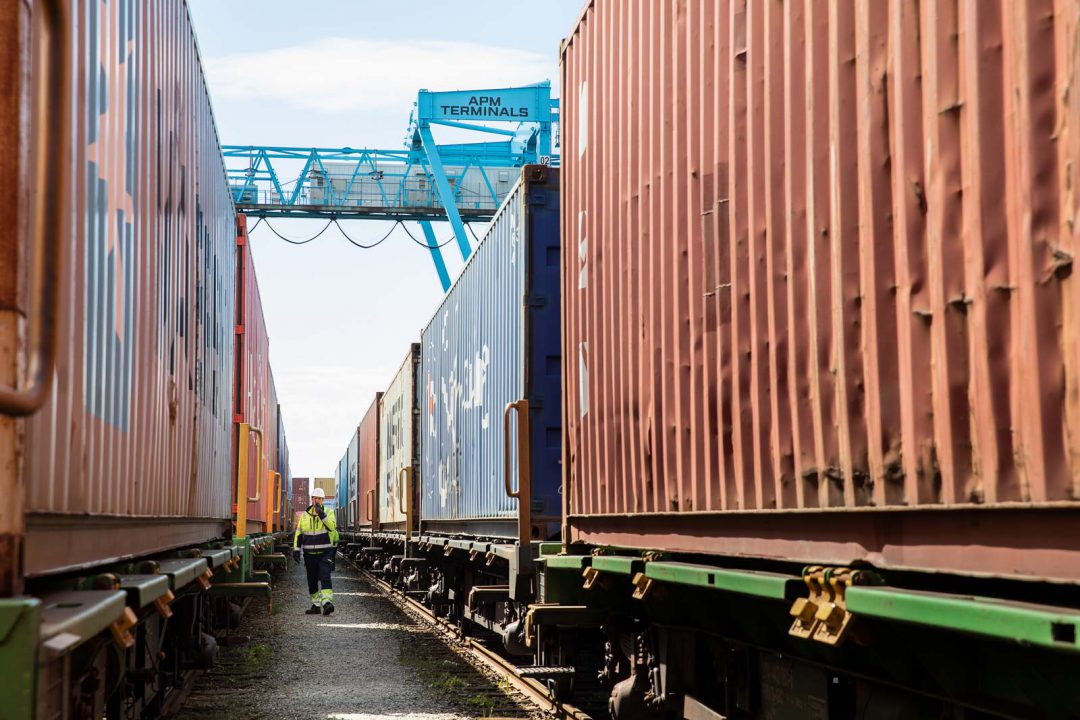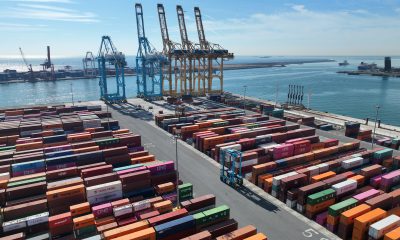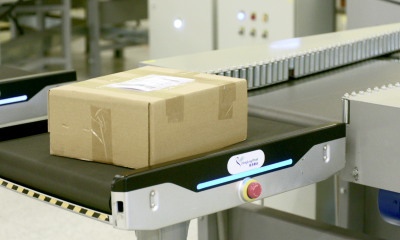Nishith Rastogi, founder & CEO of Locus, in an exclusive interview with Freightcomms talking about the Last-Mile Delivery market
The global Last Mile Delivery Market was valued at $18.7 billion in 2020 and is expected to reach $62.7 billion by 2027. In what ways has the Last-Mile market evolved over the last several years and what’s been the catalyst for the sector’s growth?
The Last-Mile market is ever evolving, as we’ve seen over the last several years. Now, more than ever, consumers are accustomed to top-notch fulfillment experiences that maximize their convenience across each step. Apart from the expedited delivery time frames that continue to get shorter, consumers also value the convenience of choosing their delivery or service slots, the ability to make custom asks on how a product should be delivered or a service rendered, real-time visibility on the status of their order, and transparent and multiple touchpoints for communication. The pandemic has undoubtedly played a large role in this acceleration.
Of course, with such a steep rise in customer demand, retailers, carriers and 3PL companies have had to scale their businesses in order to efficiently serve their customers and consumers while keeping Last-Mile costs to a minimum, which is no small feat.
I think it’s because of this and the new levels of convenience that we have seen tremendous growth and innovation in the Last-Mile sector. Companies have had to find ways to successfully streamline and grow their operations to make the post-purchase experience a delight, or risk losing customers, revenue, and reputation from getting it all wrong.
What continues to be the biggest challenge when it comes to Last Mile logistics today and where do you see the most opportunity for enterprises to enable their own success?
I firmly believe that companies that get the last mile right are at a strategic, and overwhelming advantage. So as long as last-mile fulfillment continues to be carried out by manual processes, it will be seen as a cost center that is plagued by less than efficient decision-making, poor on-ground visibility, underutilized vehicles, high costs incurred from fuel spent on empty miles, delivery delays, inefficient handling of returns, and loss of business from frustrated consumers that neither have any visibility on the fulfillment of their orders nor any ways to seek redressal with businesses.
This is exactly why one of the biggest opportunities lies with the digitalization of last-mile processes. To that end, change management is also essential. This is greatly facilitated by the best, most intuitive User Interface and availability of a variety of languages, all of which is supported by Locus’ dispatch management platform, which is, in essence, a real-world ready decision-making platform for last-mile excellence. By leveraging some of the best AI and ML engines, enterprises use the Locus platform to elevate the quality of their decision-making through automation, leverage the insights of analytics to optimize operations and strategy, address inefficiencies in the overall fulfillment process, route planning and deliveries, empower workforces to do more, and save time and money. They can also minimize miles driven, reduce the wear and tear on fleets, and emit fewer greenhouse gas emissions. At Locus, we have already powered more than 650 million deliveries globally.
These capabilities are increasingly becoming key to success for so many companies looking to level up their services, cut costs and provide a more seamless customer experience.
According to the 2022 Gartner Hype Cycle for Smart City Technologies and Solutions report, “trends in analytics at the service delivery point, decarbonization, last-mile logistics, mobility, and building options are opening the door for an experience delivered at the edge of the service delivery network.” Can you shed light on how Locus is enabling this for customers and the industry at large?
Many businesses across industries are committed to providing such an experience at the last-mile with the help of technology solutions. Locus is actively working with 150+ of such clients across 30 countries to enable last-mile excellence through its comprehensive set of offerings of its Dispatch Management Platform. The five key modules are Order Management, Dispatch planning, Hybrid Fleet Management, Track and Trace, and the ever-important Insights and Analytics.
These modules work closely together to empower these businesses to make every delivery more efficient than the last through automation, and better and quicker decision-making capabilities. For example, the platform’s Advanced Analytics Engine provides insights that power business strategy to capture new growth opportunities and uncover hidden inefficiencies that can be rectified to increase productivity. Its Order Management capabilities scale up efficiencies by automating key processes such as order capture, allocation, and even the assignment of returns and failed delivery attempts. The need for scaling up capacity with the help of trusted third-party logistics providers at reasonable rates can be met with its Capacity Management features. The powerful algorithms of its Route Planning feature learn from past deliveries and take close to 150 real-world constraints into account for creating routes that reduce the number of empty miles driven, consume less fuel, and make optimal usage of the vehicles of a fleet. In addition, track and trace features provide an exceptional consumer experience through real-time updates on orders and seamlessness and transparency in communication with businesses. In my view, it is these and other features that work together to deliver this experience at the “edge of the service delivery network.”
The report also identifies Last-Mile delivery solutions under the Slope of Enlightenment Curve. Does that mean there’s still a level of education and adoption needed for the industry? If so, what do you think has prevented companies from prioritizing these strategies and how is Locus at the forefront of unlocking its potential?
Last-mile technology solution providers have made a solid business case for these solutions in recent times, thanks to the early adoption and benefits seen by enterprise-level businesses across a wide range of industries. However, legacy processes continue to be used by businesses that are not digital natives, which is where the aforementioned change management becomes crucial.
Locus has been at the forefront of leading the change with its real-world-ready offerings that enable last-mile excellence at scale at every important step of the fulfillment process with its advanced Artificial Intelligence and Machine Learning capabilities. Its seamless and intuitive User Interface, and its availability in a variety of languages, facilitate ease of the transition process and bring real-world on-ground benefits in no time. Equally important is its ability to reduce deployment times to as low as four weeks, and its various solutions are Application Programming Interface-ready (APIs) for easy integration with existing ERP, OMS, and TMS solutions.
Where do you see the Last-Mile logistics and technology industry headed over the next several years? What do you hope most for customers against that evolution?
Many companies still only view Last-Mile logistics as a means to an end, versus a growth center and driver for their businesses. It’s where many go wrong from the start. Brands that instead tap the right technology and processes at all stages within their supply chains – especially at the Last-Mile – can provide better customer experiences, build greater loyalty and retention, and significantly contribute to the bottom line results that propel them forward.
The Last-Mile delivery market is expected to reach $62.7 billion by 2027. I think it’s only a matter of time before the majority of enterprises wake up to this reality and start putting a stronger emphasis on their Last-Mile capabilities to get ahead of the curve. Adopting the right technology solutions will not just provide enterprises with reliable and actionable insights but will also give them a competitive edge to deliver customer satisfaction at scale.
What are some of the key points that businesses should keep in mind when they are on the lookout for last-mile technology solutions?
With the high-cost and unpredictable nature of Last-Mile as a whole, enterprises should really focus on solutions that solve problems and gather data to help alleviate future problems. Automation and AI-driven solutions should always make operations for enterprises easier. In addition to saving time and money, these solutions should solve pain points and because they are automated by nature, should allow supervisors to focus time elsewhere, keeping the workforce as efficiently as possible.
Needs differ from business to business depending on things like size, scale, volume, etc. but if an enterprise is looking to utilize Last-Mile technology solutions, these should always look to solve any main pain points in their fulfillment and overall supply chain.
How can businesses leverage their last-mile technology solutions to meet their sustainability goals?
Last-Mile tech solutions are really a game changer for enterprises looking to meet their sustainability goals. There are several ways these solutions do this: first would be route planning and optimization, where these solutions inherently reduce the number of miles driven and hours on the road – and with it – the reduction of greenhouse gas emissions.
The second would be that these solutions are data-driven, and with the accumulation of data comes the opportunity to uncover hidden inefficiencies across the fulfillment process and overall supply chain. Using this data, supervisors and fleet managers can make the necessary adjustments to production and delivery processes that can ultimately benefit the environment. Locus has helped reduce more than 17 million GHG emissions by enabling businesses to cover less distance per delivery.
Anything else you’d like to share?
Consumers are now an essential part of the overall supply chain pulling products and services to the home. It is no more an option but a necessity for businesses to deliver a seamless customer experience in order to command their loyalty in the future. I believe that smart, innovative, Last-Mile solutions can alleviate a number of pain points for enterprises while keeping costs to a minimum, deliveries and routes optimized, and drivers and customers looped into their deliveries.
These solutions are a really great tool to level-up Last-Mile efficiency, and with the holidays right around the corner, there really is no better time to embrace them to differentiate yourself from your competition.
























